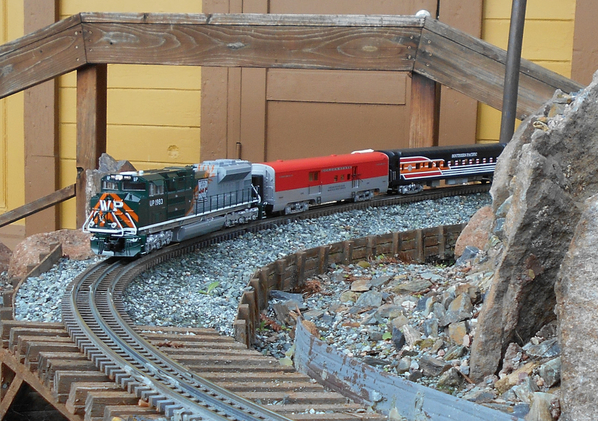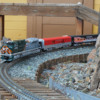Along those same lines......
Don't take my earlier message as not agreeing with what was said about lube- lube with the correct lube and amounts, don't lube the wrong things with the wrong lube. Don't drown the engine dripping with lube. Don't leave the surface of a gearbox or bottom of a truck wet with even the residue of of a previous drip. Wipe it down and ensure it's as clean and dry to not attract fibers and dirt.
It's about what causes what. You can have a bone dry engine, never lubed, destroyed with tinsel, hair, carpet fibers, animal hair, dust, grit, dirt, and yes, scenery products like ballast, painted sawdust grass, on and on.
Yes, lubing in general- anything open, lube tends to attract the above long list of "destroyers" and over lubing (excess lubricant and lubing things not needing lube) just attracts that much more. Not to mention traction tires, rail traction in general, slime on the track, conductivity, it all becomes the cycle of self destruction. Your track becomes dirty because your engines are dirty and and rolling stock recontaminates after you clean the track.
You want your expensive new train to run in as clean and debris free track and layout, as clean as possible- both from a rail and what is on or near the rails perspective. Wiping down the rails is not enough, and vacuuming or other methods of sweeping and ensuring dust, dirt, hair, fibers, and other things do not accumulate around the trains path. They will likely end up in your gears, wrapped around your axles, and into your bushings.
I'm just saying, again, lubrication- needed (required) in many places to prevent wear. At the same time, the very lube used, or used to excess, or wrong lube used in the wrong place, can then pick up dirt, dust, grit, fibers, hair, and destroy a bearing or gear, lockup or overload a motor and cause as much damage, if not more than not lubing a location. The wrong lube or excess lube drips and migrates to where it should not be. Grease and other thicker lubricants tend to dry out or attract and capture dirt.
Again my first reply was sort of tongue-in-cheek in that there are tons and tons and tons of stories in the last 4 years I have seen of the stray grain of ballast caught in an exposed truck gear train locking it up. Probably makes one of the top things to check for in any train won't move topic.
![]()










